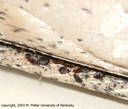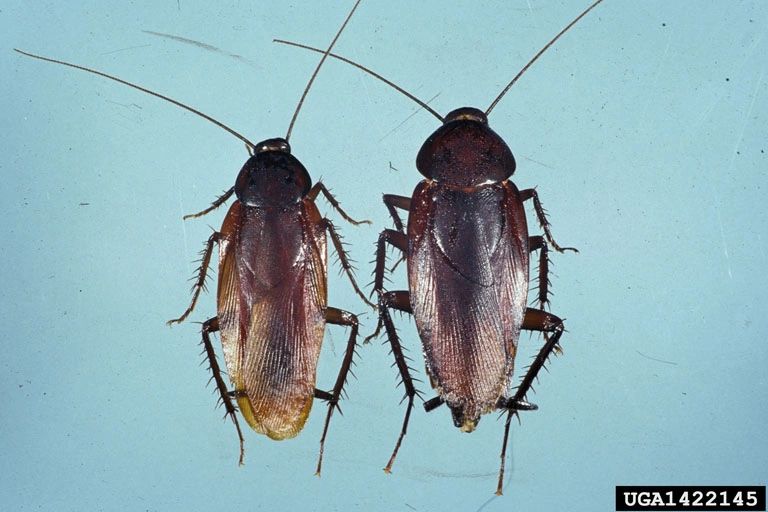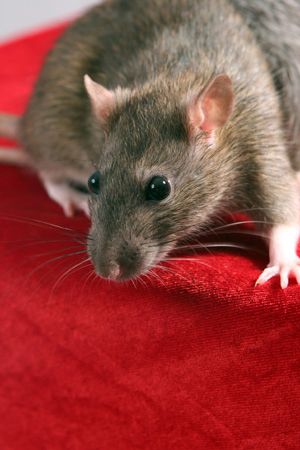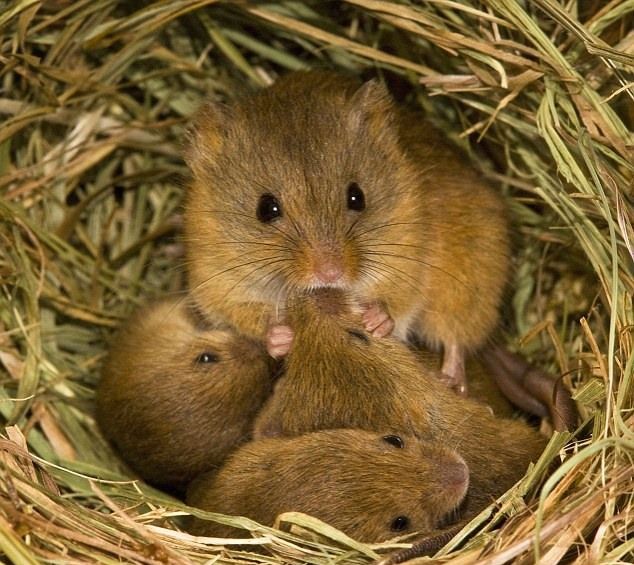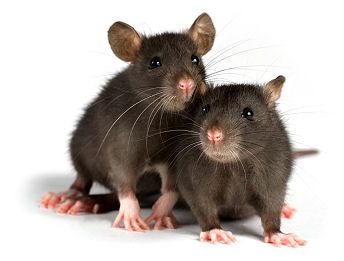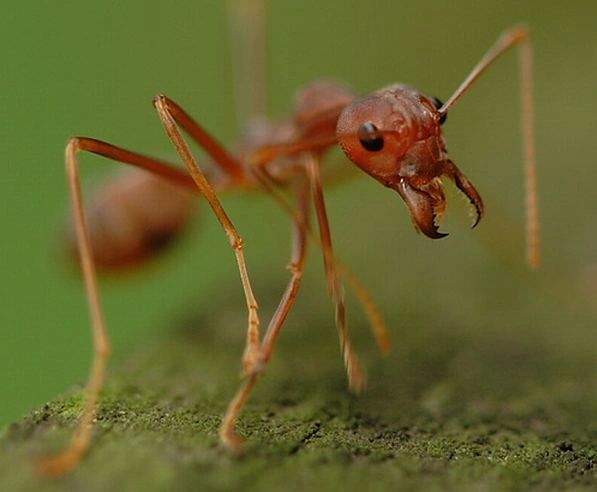Learning Center
ACTION PEST CONTROL
|
|
Bed bugs are parasites that preferentially feed on humans. If people arenʼt available, they instead will feed on other warmblooded animals, including birds, rodents, bats, and pets. Bed bugs have been documented as pests since the 17th century. They were introduced into our country by the early colonists. Bed bugs were common in the United States prior to World War II, after which time widespread use of synthetic insecticides such as DDT greatly reduced their numbers. Improvements in household and personal cleanliness as well as increased regulation of the used furniture market also likely contributed to their reduced pest status. In the past decade, bed bugs have begun making a comeback across the United States, although they are not considered to be a major pest. The widespread use of baits rather than insecticide sprays for ant and cockroach control is a factor that has been implicated in their return. Bed bugs are blood feeders that do not feed on ant and cockroach baits. International travel and commerce are thought to facilitate the spread of these insect hitchhikers, because eggs, young, and adult bed bugs are readily transported in luggage, clothing, bedding, and furniture. Bed bugs can infest airplanes, ships, trains, and buses. Bed bugs are most frequently found in dwellings with a high rate of occupant turnover, such as hotels, motels, hostels, dormitories, shelters, apartment complexes, tenements, and prisons. Such infestations usually are not a reflection of poor hygiene or bad housekeeping. |
|
|
In order to win the war against cockroaches, here's what you should know... Entry: Cockroaches can enter your home in many different ways -- from the outside through cracks and crevices, vents, sewer and drain pipes, even in grocery bags and various deliveries.• Ideal environment: Your home's an ideal breeding ground. With plenty of food, warmth, water and nesting sites, they can remain active all year round. • Reproduction: Cockroaches reproduce quickly. For every one you see there can be 200 more hiding and multiplying behind your walls. • Evasiveness: Because cockroaches are nocturnal, if you've seen one, you haven't seen them all. The few cockroaches you see by day were likely forced out by overcrowding, a possible sign of severe infestation. • Allergies: The dust created by cast-off cockroach skins, dead bodies and droppings can aggravate allergies, especially in sensitive individuals. • Young cockroaches look like smaller versions of adult cockroaches but without wings. • The German, not the American cockroach is the most troublesome domestic roach species in North America. • Early fossil remains show that cockroaches that lived over 300 million years ago would have looked very similar to present-day species. • Cockroaches live just about everywhere and eat almost anything. However, since they evolved as scavengers of dead plant material, they prefer carbohydrates to protein and fat. • The three cockroach species most often classified as pests have unwholesome habits, an unpleasant odor, and may occur in large numbers, especially in warmer climates. • Cockroaches feed mainly at night and are scavengers that will eat almost anything. Some show a marked attraction to alcoholic beverages, particularly beer. • Many humans are allergic to the dust created by cast-off cockroach skins, dead bodies and droppings. • Cockroaches can enter homes through cracks and crevices but are often brought in with shipped material, groceries, beer and soft-drink cases, used appliances, rugs, furniture and so forth. |
|
|
Homeowner Tips About Rodents Signs of Rodent Presence • Droppings along well-traveled pathways, in feeding areas and near the rodent's shelter. Droppings may be as long as three-fourths-inch and up to one-fourth-inch in diameter. Fresh droppings are soft. • Tracks, including footprints and tail marks, on dusty surfaces, in mud or snow. • Urine along traveled pathways or in feeding areas. Both wet and dry rodent urine glows under ultraviolet light. • Runs or burrows next to walls, along fences, next to buildings or under bushes and debris. • Smudge or rub marks on beams, rafters, walls, pipes and other fixtures. • Gnawing marks on doors or ledges, in corners, in wall material, on stored materials or on other surfaces. • Noises in the walls caused by gnawing, climbing, clawing, squeaks and fighting, particularly at night when rodents are most active Discouraging Rodent Activity • Store food, particularly grains and nutmeats, in rodent-proof glass or metal containers. • Refrigerate fresh fruit and vegetables or store in open-air coolers screened with one-fourth-inch wire mesh. • Check bags of grass seed, dry pet food and other material stored in sheds and outbuildings regularly for signs of rodent entry. Move indoors, if necessary, or put in metal or screened bins. • Separate organic garbage from metal, glass and plastic at the sink. Drain the organic material and wrap it in newspaper before placing it in the garbage can. • Rodent-proof your garbage cans by setting them on a 12-inch high platform and equip them with spring fasteners. Maintain a distance of at least 24 inches between the cans and structures from which rodents might jump onto the cans. • Replace or repair outdoor garbage cans that have holes or lids that do not fit tightly. • Use enough cans to hold all your garbage. Do not store surplus garbage in cardboard, plastic or paper bags that can be penetrated by rodents. • Wash out garbage cans periodically so that no organic matter remains after the cans are emptied. • Never leave garbage cans open during the night, and don't leave garbage outside in plastic bags. • Pick up or bury fallen fruit and pet feces daily. Put away any foods that pets do not eat in between feedings. • Search out even small holes and stuff with steel wool, cover with sheet metal, or fill with caulk, plaster or similar materials. Rodent Factoids Rats |
|
|
Ant Factoids • North American ant species come in a wide range of sizes and colors (black, brown, red, yellowish and combinations of these). • Ants communicate by touch and smell. They lay down chemical trails and constantly touch each other to pass on their nest odor. • Ants are social insects and live in colonies which may have as many as 500,000 individuals. • Tiny ants can lift objects that weigh more than they do. Ants also have remarkably strong jaws and can give a painful nip. When some species bite, they are able to squirt formic acid from the end of their abdomen into the wound -- making it doubly painful. • When ants find food, they lay down a chemical trail, called a pheromone, so that other ants can find their way from the nest to the food source. Ant Myths Ants are outdoor insects that nest in the ground. Ants are more than willing to make their way inside to hunt for food. They can nest in lawns, walls, stumps, in floors, in window sills, in and around chimneys, and even under foundations.To eliminate an ant infestation, just eliminate as many ants as you can whenever you see them.Ridding your home of even a hundred ants out of thousands will not hurt the colony because those ants will be replaced quickly. The key (and biggest challenge) is to find the colony, most importantly the queen or queens, and eliminate it.Ants can be a nuisance, but cause no real damage.Carpenter ants, the largest North American ants, dig galleries in wood and sometimes damage foundations and other wooden structures. They do not feed on the wood, as do termites, but they cause almost as much damage by nesting in it -- approximately $750 million each year.Ants don't bite.Fire ants, most common in the Southeast U.S. from Texas to North Carolina and south into Southern Florida, not only sting humans and small animals, they kill and eat nesting birds, including young poultry, and cause much distress to other livestock.Ant Facts for Homeowners Studies suggest the most effective and responsible way to fight ants is to use both chemical and non-chemical techniques. The following are measures you can take to help reduce the chances of reinfestation: |

Flea-Order Siphonaptera
APPEARANCE: Black to brownish-black, about one-twelfth to one-sixteenth inch long; six legs, with many bristles on body and legs; flattened body.
HABITS: Found on cats and dogs year-round, but most common during warm and humid weather; readily attack and feed on humans; can jump as much as seven-eighth inch vertically, and 14 to 16 inches horizontally.
DIET: Blood
REPRODUCTION: Female can lay about 25 eggs a day, and up to 800 eggs during her lifetime; fleas undergo complete metamorphosis, usually in 14 to 90 days.
OTHER INFORMATION: Carrier of many diseases; adults can live one to two months without feeding.
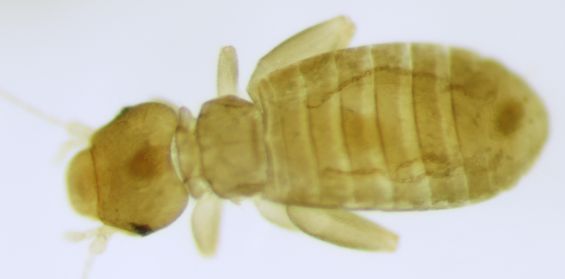
Booklice Family Psocidae
APPEARANCE: Colorless to gray or light brown, ranging from one-twenty-fifth to one-twelfth inch long.
HABITS: Prefer to live in damp, warm areas; can be found outdoors in grass or leaves, and in areas where molds grow.
DIET: Microscopic molds and starchy materials such as paste and glues of book bindings and wallpaper.
REPRODUCTION: Single female produces between 120 to 456 offspring; lifetime averages 24 to 110 days.
OTHER INFORMATION: Most numerous in houses during spring and summer; may become abundant and cause damage to books.

Indian Meal Moth Plodia interpunctella
APPEARANCE: Adults have wing spread of five-eighths inch; wings are pale grey, with outer portion of forewing reddish brown; larvae are about one-half inch long, with dirty white color.
HABITS: Adults fly mainly at night.
DIET: Larvae feed on all kinds of grains, flours and dried fruits; its extensive webbing spoils more food than it consumes.
REPRODUCTION: Females lay between 200 to 400 eggs in spring; complete life cycle ranges from four to six weeks.
OTHER INFORMATION: Larvae and adults are often mistaken for clothes moths; adults live only one or two weeks.

Clothes Moth Order Lepidoptera
APPEARANCE: Larvae are shiny, white worms about one-half inch long; adults have narrow fringed wings, are yellowish brown and also about one-half inch long.
HABITS: Prefer darkness; can disappear quickly if disturbed.
DIET: Wool and other fabrics; fur; other protein-based materials.
REPRODUCTION: Adult females lay up to 200 eggs; larvae reach maturity in 35 days to two and one-half years; adults live 15-30 days.
OTHER INFORMATION: Adult clothes moths are incapable of eating anything; it is the larvae which do all the damage.

Centipede Class Chilopoda
APPEARANCE: Flattened, with one pair of legs on most of their segments; segments number from 10 to 100; one to one and one-half inches long; various colors.
HABITS: Usually live outdoors beneath damp accumulations of leaves, stones, boards, etc. Occasionally find their way into homes, where they hide in moist basements, damp closets and bathrooms; when disturbed, they run swiftly.
DIET: Insects and spiders.
LIFE SPAN: Some species live as long as five to six years.
OTHER INFORMATION: Large jaws can inject poison, but a bite is comparable to a wasp sting, and is not life-threatening.
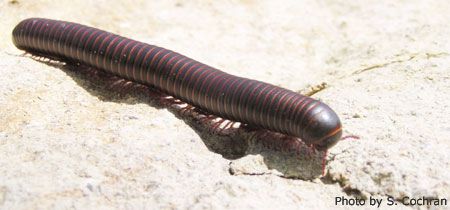
Millipede Class Diplopoda
APPEARANCE: Brownish, one to one and one-half inches long; segmented, with a pair of legs per segment.
HABITS: Nocturnal; normally live outdoors under objects located on damp soil; hordes will crawl into homes.
DIET: Eggs are deposited in the soil; most species reach sexual maturity in the second year, and live several years after that.
OTHER INFORMATION: Occasional epidemics occur, where thousands of millipedes will infest an area, sometimes carpeting the ground with their bodies.

Brown Recluse Spider Loxosceles reclusa
APPEARANCE: Yellowish to brown, with a dark brown violin-shaped dorsal marking; five-eighths to one-half inch long.
HABITS: Can be found outside under rocks, leaves, debris, bark, wood piles, utility boxes; found inside in storage areas such as closets, attics, bedrooms; usually found close to the ground.
DIET: Cockroaches, crickets and other soft-bodied insects.
REPRODUCTION: Mating occurs from February to October; 40 to 50 eggs are deposited in off-white, round silken cases; lifetime averages from one to two years.
OTHER INFORMATION: Bite is poisonous, but rarely fatal; neglected bites can cause a disfiguring scar; presence of shed skins indicates infestation.

Black Widow Spider Genus Latrodectus
APPEARANCE: Female is one-half inch long; shiny black, with hourglass-shaped red mark on underside of abdomen.
HABIT: Can be found almost anywhere, indoors or out; prefer to build their nests close to the ground.
DIET: Insects trapped in web made by female.
REPRODUCTION: 300 to 400 eggs are laid in silken cocoon, hatch in about 10 days.
OTHER INFORMATION: Black widows are not aggressive, and will not bite unless provoked. However, they are poisonous. If bitten, seek medical attention; bites are rarely fatal.

Pillbug/Sowbug Order Isopoda
APPEARANCE: Not more than three-fourths-inch long; thorax composed of seven hard overlapping plates with seven pairs of legs; only pillbugs are able to roll up into a ball.
HABITS: Prefer moist locations; found under objects on damp ground; mostly nocturnal; often invade basements and first floors of houses.
DIET: Decaying vegetable matter.
REPRODUCTION: Female gives birth to between 24 and 28 young per brood; usually one to three generations a year; may live as long as two years.
OTHER INFORMATION: Pillbugs and related sowbugs are the only crustaceans that have become completely adapted to living their whole life on land.

Earwig Order Dormaptera
APPEARANCE: Five-eighths inch long, dark reddish-brown, with yellow-brown legs; large forceps (cerci) on the end of the abdomen, which pose no threat to humans.
HABITS: Found all over homes, particularly in cracks and crevices near or on the ground; active primarily at night.
DIET: Scavengers; will eat just about anything.
REPRODUCTION: Up to 60 eggs are laid in burrows in the ground and guarded by the female; hatch in the spring.
OTHER INFORMATION: Many species have a gland which secretes a foul-smelling, yellowish brown liquid when threatened.

Silverfish Order Thysanura
APPEARANCE: About one-fourth inch to one-half inch long, somewhat "carrot-shaped" from above; gray or silver-colored; three filaments extend from rear.
HABITS: Nocturnal; move swiftly, can jump; found where there is excessive humidity; do great damage to books, wallpaper, other paper products.
DIET: Prefer starch, paste, glue; paper products of all kinds; starched textiles.
REPRODUCTION: Two to three month reproductive cycle; lay about 50 eggs per hatch; live two to two and a half years.
OTHER INFORMATION: Thought to belong to one of the most primitive existing insect orders, more than 400 million years old.

Ticks Order Acarina
APPEARANCE: Appearance differs by species, but all adults are very small, roundish, with eight legs (larvae or seed ticks have six legs); one-eighth to one-half inch long.
HABITS: Live on the bodies of mammals, birds and reptiles.
DIET: Blood; all species can swell to a considerable size after feeding.
REPRODUCTION: Differs by species, but typical indoor cycle begins with up to 5,000
OTHER INFORMATION: Ticks are known carriers of many serious diseases, including encephalitis, tick paralysis, typhus and Lyme disease; adults can live over 500 days without a meal.

Scorpion Order Scorpionida
APPEARANCE: Range in size from one and one-half to three inches long; eight legs, a pair of large pincers near the mouth; tail possesses a stinger.
HABITS: Most active at night; during the day, they hide under bark, logs or stones; in houses, they hide in closets, shoes and folded clothes.
DIET: Small spiders and soft-bodied insects; will eat other scorpions.
REPRODUCTION: Females produce an average of 32 young; young reach maturity in three to four years.
OTHER INFORMATION: Common in southern states; most species deliver a sting no more harmful than a bee's; very poor eyesight; use pincers as feelers.

Bees Order Hymenoptera
APPEARANCE: Most species of concern to man have yellow and black coloring; seven-sixteenths to five-eighths inch long; appear to have hairy bodies.
HABITS: Live in colonies of 20,000 to 80,000 individuals; will leave humans alone if not provoked.
DIET: Nectar and pollen.
REPRODUCTION: Only one egg-laying queen in a hive; queen may live as long as five years and lay as many as 1,500 to 2,000 eggs per day; worker females protect eggs and the young; drones' only duty is to mate with queen, after which they die.
OTHER INFORMATION: Stings can be painful, but are harmless to most people; however, dangerous allergic reactions can occur.

Carpenter Bee Genus Xylocopa
APPEARANCE: Large, about one inch, resemble bumble-bees; some species may have a blue-black, green or purple metallic sheen; no hair on abdomen.
HABITS: Often burrow into the exposed, unfinished dry wood of buildings, telephone poles, fence posts and bridges; prefer softer woods for nesting; not social insects, although individuals may establish burrows close to each other.
DIET: Pollen and nectar.
EPRODUCTION: Complete one generation per year in most of the U.S.; mature from egg to adult in from 84 to 99 days; female furnishes nest with "bee bread," a mixture of pollen and regurgitated nectar, and lays an egg on top of it.
OTHER INFORMATION: Damage to wood from a pair of bees is slight, but a larger number can, over a period of time, cause considerable damage; do not sting; make loud buzzing noise when flying

Wasps Order Hymenoptera
APPEARANCE: Variety of shapes and colors; can be distinguished from bees by their smooth, rather than hairy, bodies; one-half inch to three-fourths inch long.
HABITS: Exhibit predatory and scavenging behavior; some species are solitary, while others live in colonies which may number thousands of individuals.
DIET: Primarily protein, such as spiders, soft-bodied insects and small animals.
REPRODUCTION: Social wasps begin a nest with one queen laying all eggs for colony; if a queen dies, a worker can take over egg-laying function until colony produces new queen.
OTHER INFORMATION: Very protective of their nests; will defend against invaders with painful stings.
ACTION Pest Control
Corporate Office
2109 South Taylor Rd.
University Heights, Ohio 44118
216-321-0404
nobugs@actionpestohio.com
Website by FADCS

